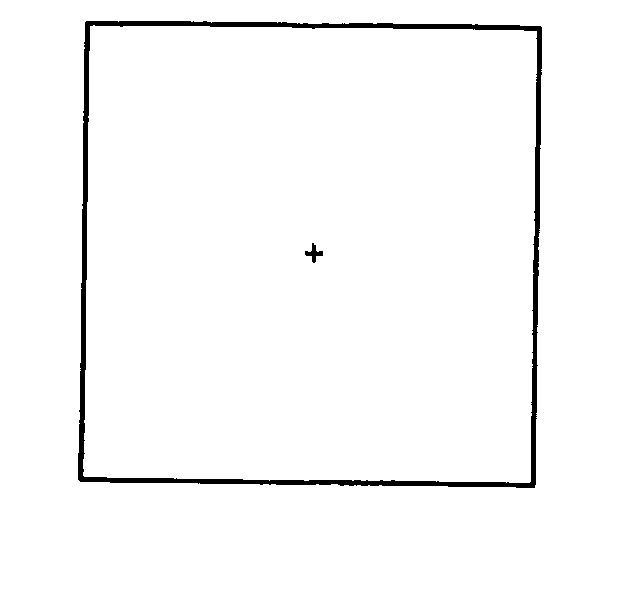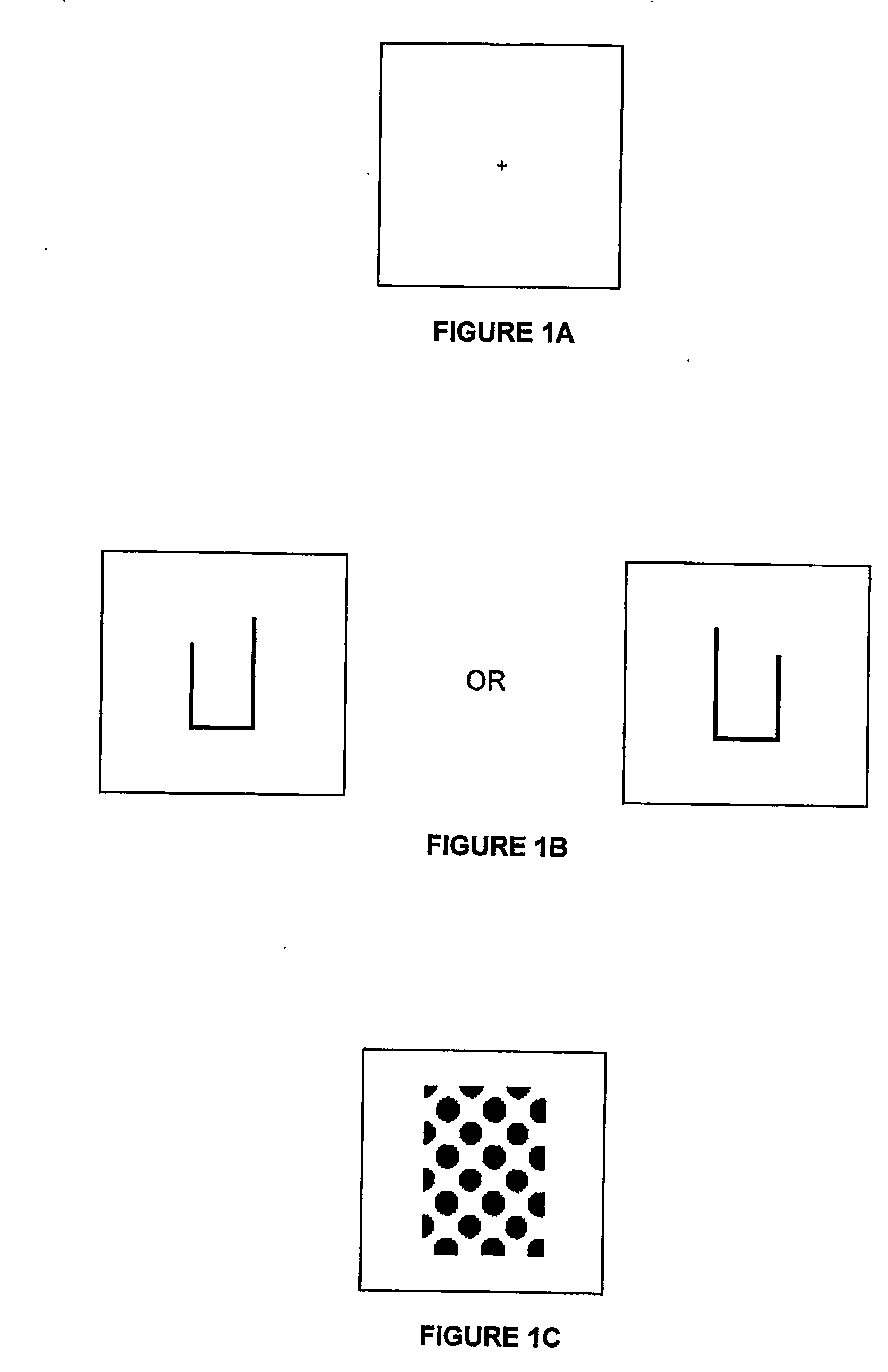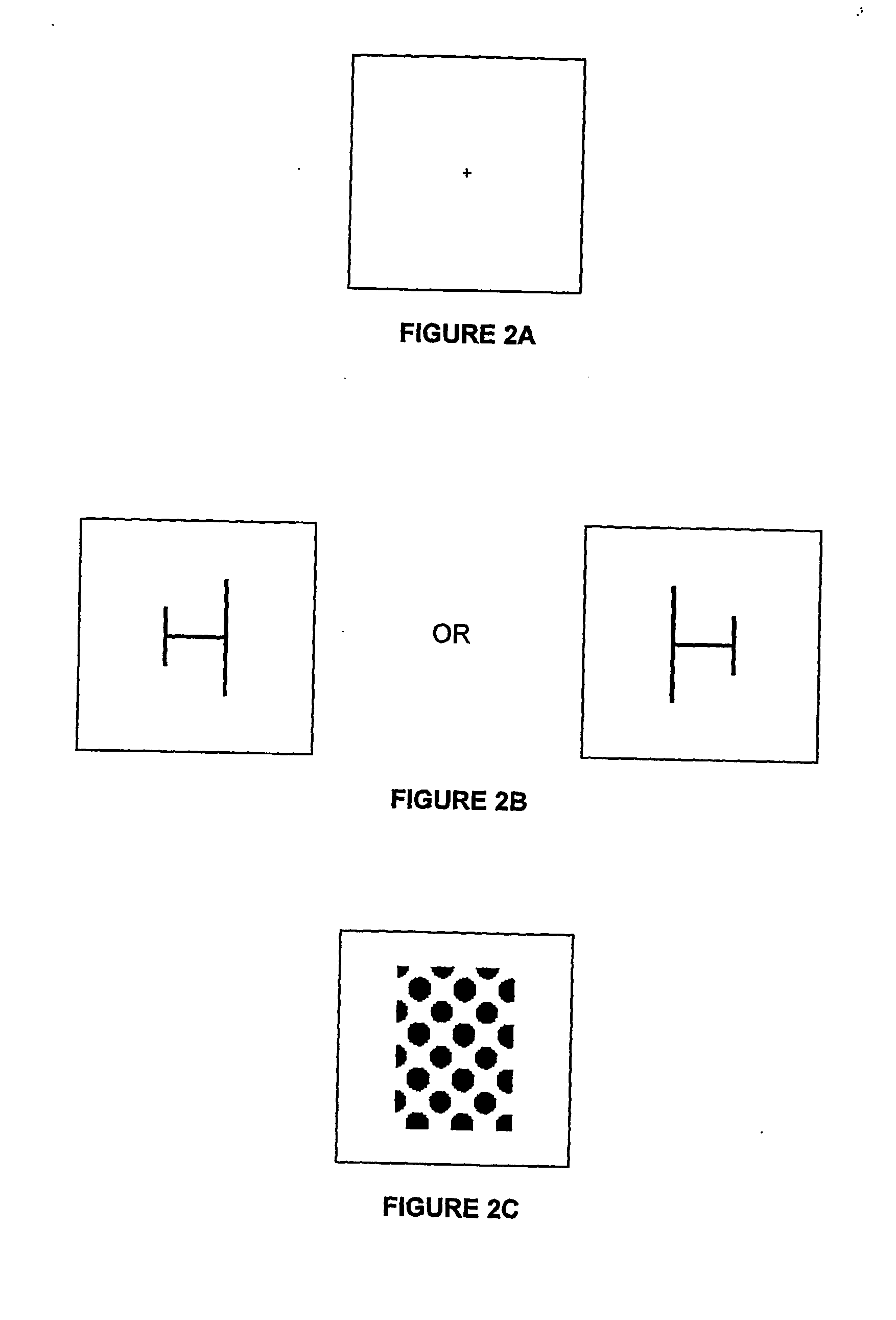Assessment of cognitive impairment
a cognitive impairment and assessment method technology, applied in the field of cognitive impairment assessment, can solve the problems of time-consuming and laborious existing methods for detecting cognitive impairment, unsuitable for subtle cognitive impairment and small variations in cognitive ability, and introduce an error factor into any estimation of cognitive impairment, etc., to facilitate the comparison of the user's profile
- Summary
- Abstract
- Description
- Claims
- Application Information
AI Technical Summary
Benefits of technology
Problems solved by technology
Method used
Image
Examples
Embodiment Construction
[0062] One embodiment of the present invention involves first presenting a user with a with a focal point stimulus in the form of a small centrally located cross, as illustrated in FIG. 1A. A visual test stimulus is then presented for a pre-determined test stimulus exposure duration. The visual test stimulus may be of any kind. In one embodiment, the visual test stimulus is in the form of two parallel lines of different length which are joined, such as the ones illustrated in FIG. 1B. The images in FIG. 1B are presented one at a time for a relatively short period known as the test stimulus exposure duration and are replaced at the end of each test stimulus exposure duration by a mask consisting of filled circles. The focal point stimulus, then the test stimulus and then the subsequent mask are repeatedly presented to the user for pre-determined test stimulus exposure durations which are typically chosen to be between 10 ms and 300 ms. The focal point stimulus and mask can be present...
PUM
 Login to View More
Login to View More Abstract
Description
Claims
Application Information
 Login to View More
Login to View More - R&D
- Intellectual Property
- Life Sciences
- Materials
- Tech Scout
- Unparalleled Data Quality
- Higher Quality Content
- 60% Fewer Hallucinations
Browse by: Latest US Patents, China's latest patents, Technical Efficacy Thesaurus, Application Domain, Technology Topic, Popular Technical Reports.
© 2025 PatSnap. All rights reserved.Legal|Privacy policy|Modern Slavery Act Transparency Statement|Sitemap|About US| Contact US: help@patsnap.com



